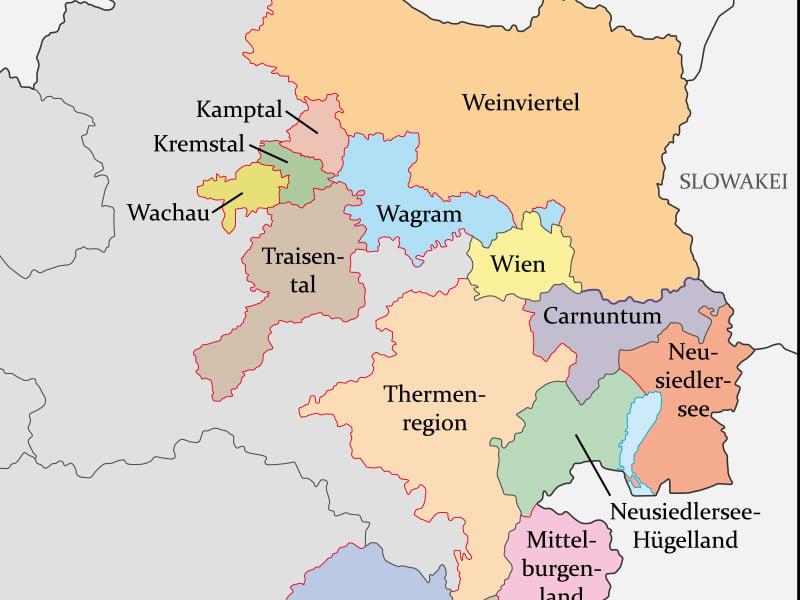Zweigelt = St. Laurent x Blaufränkisch
- Posted on
- Posted in Austria, Blaufrankish, zweigelt
- 0

The most-planted red grape and overall, second-most-planted grape in Austria, is Zweigelt. Its origins date back to 1922, when Dr. Friedrich Zweigelt, of the Center for Viticulture and Horticulture at Klosterneuberg, cross pollinated St. Laurent with Blaufränkisch.
The grape was initially named Rotburger by Dr. Zweigelt, but that led to confusion with another grape called Rotberger. In the 1970s, the grape was renamed Zweigelt, in honor of its creator.
Both St. Laurent and Blaufränkisch were native to Austria, but each presents challenges in the vineyard. St. Laurent buds early, leaving it susceptible to late frosts. Blaufränkisch, on the other hand, ripens late, making it vulnerable to autumn rains. The crossing of these two grapes—Zweigelt—yielded a grape that buds later than St. Laurent, and that ripens earlier than Blaufränkisch, reducing both risk factors.
Over time, Zweigelt became the most important red grape in Austria. It represents nearly 14 percent all of vineyard plantings in the country, with over 15,800 acres planted with it.
Wines made from Zweigelt are deeply colored in a reddish-violet. The color may lead one to believe the wine will be bold, but, in general, wines made from the grape are bright, fruity and fairly low in tannins. Prominent aromas and flavors in Zweigelt may include cherries, raspberries, black pepper, and cinnamon.
With its soft tannins, Zweigelt can be served with a light chill. The bright, high acidity in Zweigelt makes it a natural pairing for fatty or rich dishes like sausages, duck confit, and cheese pizza. Its spicy characteristics make it a great pairing for grilled meats of all kinds, including chicken and ribs. Remarkably, this is a red wine that can pair with shellfish, if the fish is cooked in wine or in a tomato-based sauce. For cheese pairings, try Zweigelt with goat’s milk cheese, gouda, Roquefort, and cream cheese.
At City Vino, our tasting on Saturday, September 19th will be featuring 3 wines from Austria, including two made from Zweigelt. The tasting will include one white, one rosé sparkling, and one red wine. The white is a dry Austrian Riesling and is the Josef Bauer Riesling Feuersbrunn 2018. The dry sparkling rosé is the Steininger Young Rosé NV, comprised of 60 percent Zweigelt blended with 20 percent Cabernet Sauvignon and 20 percent Pinot Noir. Lastly, the red is the Weingut Heinrich Zweigelt 2016 , made from 100 percent Zweigelt. Join us for this taste of Austria—especially Zweigelt!

Comments
Be the first to comment...